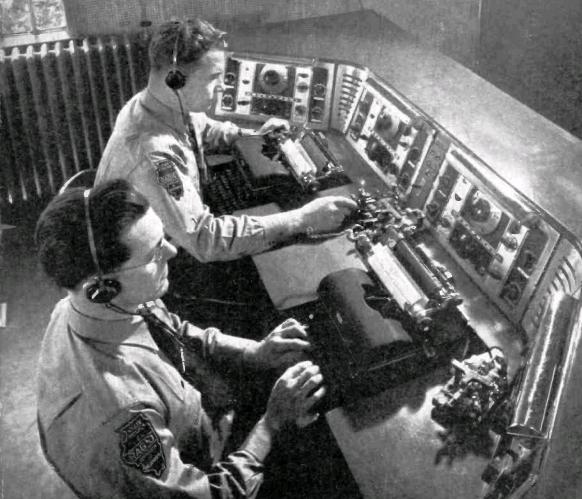A few weeks ago, I featured the photo shown here of the zone and interzone console of the Illinois State Patrol radio in 1941, from the July-August 1941 issue of National Radio News. Once again, I heard from reader Bob Ballantine, W8SU, who has a special interest in the history of police radio, being retired from the Ohio State Highway Patrol.
He pointed out that one of the officers shown in this picture (unfortunately, the issue of National Radio News from which it is taken doesn’t identify which is which) is famous in his own right.
Officer Charles “Ten Four” Hopper, born in 1906, is credited as the creator of the iconic “ten code” signal system used by decades by police officers. During a time when radio time was limited, he recognized the need to abbreviate long transmissions, and came up with the number codes for common phrases. The “ten” prefix was apparently designed to ensure that the message went through when the officer keyed up the mike, since the radio’s dynamotor power supply needed to come up to speed, and the first bit of a transmission might be lost.
The codes were originally proposed in 1935, and adopted in 1937 by the Association of Police Communications Officers (APCO).
Hopper was apparently licensed as a ham. There’s a listing for a Charles L. Hopper as W9THK in Springfield, Illinois, in the 1937 call book.
Click Here For Today’s Ripley’s Believe It Or Not Cartoon
![]()

